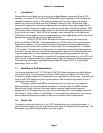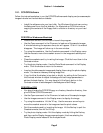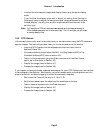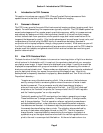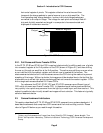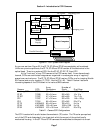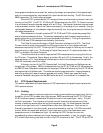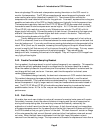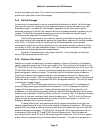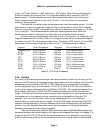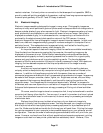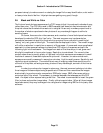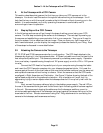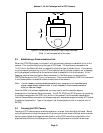Section 2 - Introduction to CCD Cameras
Page 9
have a single stage TE cooler and a temperature sensing thermistor on the CCD mount to
monitor the temperature. The ST-9E has a supplemental second stage cooling booster with
water cooling as an option (described in section 6.1). The microcontroller controls the
temperature at a user-determined value for long periods. As a result, exposures hours long are
possible, and saturation of the CCD by the sky background typically limits the exposure time.
The temperature regulation feature of the ST-7E, ST-8E and ST-9E also means that one dark
frame can be used for similar exposures on several nights. At 0 °C the dark current in the ST-
7E and ST-8E, high-resolution mode, is only 36 electrons per minute! The ST-9E, with it's
bigger pixels, has roughly 15 times this amount of dark current, 5 times due to the larger pixel
area and 3 times due to the inherent higher bulk dark current in the device. That's why we
include the cooling booster with the ST-9E.
The sky background conditions also increase the noise in images, and in fact, as far as
the CCD is concerned, there is no difference between the noise caused by dark current and that
from sky background. If your sky conditions are causing photoelectrons to be generated at the
rate of 100 e
-
/pixel/sec, for example, increasing the cooling beyond the point where the dark
current is roughly half that amount will not improve the quality of the image. This very reason
is why deep sky filters are so popular with astrophotography. They reduce the sky
background level, increasing the contrast of dim objects. They will improve CCD images from
very light polluted sights.
2.4.2. Double Correlated Sampling Readout
During readout, the charge stored in a pixel is stored temporarily on a capacitor. This capacitor
converts the optically generated charge to a voltage level for the output amplifier to sense.
When the readout process for the previous pixel is completed, the capacitor is drained and the
next charge shifted, read, and so on. However, each time the capacitor is drained, some
residual charge remains.
This residual charge is actually the dominant noise source in CCD readout electronics.
This residual charge may be measured before the next charge is shifted in, and the actual
difference calculated. This is called double correlated sampling. It produces more accurate
data at the expense of slightly longer read out times (two measurements are made instead of
one). The ST-7E, ST-8E and ST-9E utilize double correlated sampling to produce the lowest
possible readout noise. At 13e
-
to 15e
-
rms per read these cameras are unsurpassed in
performance.
2.4.3. Dark Frames
No matter how much care is taken to reduce all sources of unwanted noise, some will remain.
Fortunately, however, due to the nature of electronic imaging and the use of computers for
storing and manipulating data, this remaining noise can be drastically reduced by the
subtraction of a dark frame from the raw light image. A dark frame is simply an image taken
at the same temperature and for the same duration as the light frame with the source of light to
the CCD blocked so that you get a "picture" of the dark. This dark frame will contain an image
of the noise caused by dark current (thermal noise) and other fixed pattern noise such as read
out noise. When the dark frame is subtracted from the light frame, this pattern noise is
removed from the resulting image. The improvement is dramatic for exposures of more than a



